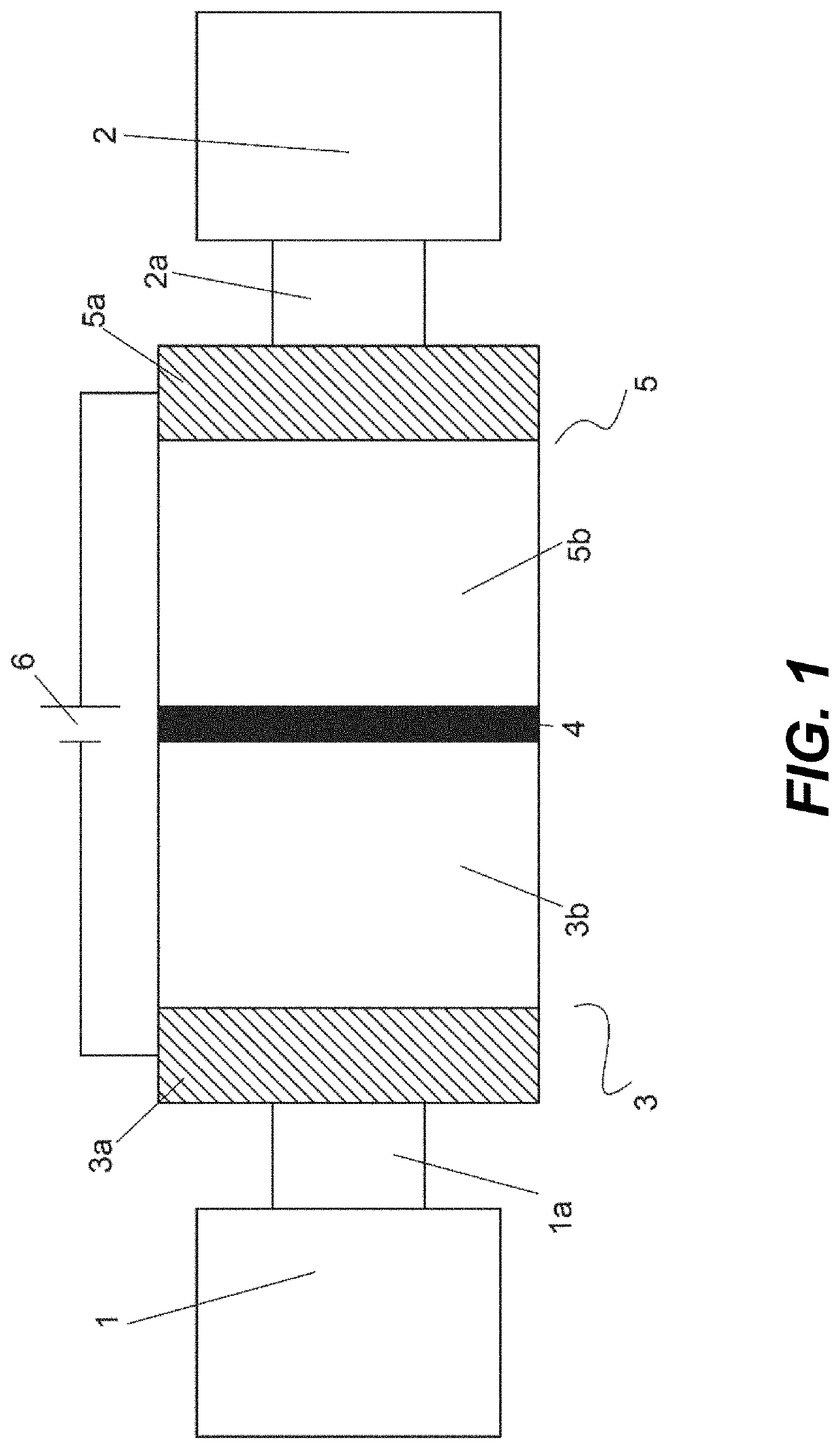An alkaline flow battery assembly
a technology of alkaline flow and battery assembly, which is applied in the field of alkaline flow battery assembly, can solve the problems of corrosive vanadium electrolytes that are not environmentally friendly, csms are expensive, and csms are the most expensive element in the electrochemical reactor, and achieves the effects of reducing cost, increasing current density, and reducing the conductivity of microporous separators
- Summary
- Abstract
- Description
- Claims
- Application Information
AI Technical Summary
Benefits of technology
Problems solved by technology
Method used
Image
Examples
Embodiment Construction
[0008]It is an object of the invention to provide an alkaline flow battery assembly to solve the technical problems of the prior art. More concretely, the cation-selective membranes (CSMs) currently used in alkaline flow batteries are expensive. Indeed, CSMs are the most expensive element in the electrochemical reactor and the major contributor to the cost of the stack model. In addition, the ionic conductivity of these cation-selective membranes in alkaline media is lower than that in acid media due to the larger size of the K+ and Na+, with respect to H+, limiting the maximum current density at which the electrochemical reactor can be operated. The operating current density has a tremendous impact in the cost of the stack as well; the lower the current density, the larger reactor area and the higher cost. The technical problem is solved by the assembly of claim 1. In the dependent claims it is disclosed other embodiments of the assembly.
[0009]The present invention is based on the ...
PUM
| Property | Measurement | Unit |
|---|---|---|
| current densities | aaaaa | aaaaa |
| operating temperature | aaaaa | aaaaa |
| operating temperature | aaaaa | aaaaa |
Abstract
Description
Claims
Application Information
 Login to View More
Login to View More - R&D
- Intellectual Property
- Life Sciences
- Materials
- Tech Scout
- Unparalleled Data Quality
- Higher Quality Content
- 60% Fewer Hallucinations
Browse by: Latest US Patents, China's latest patents, Technical Efficacy Thesaurus, Application Domain, Technology Topic, Popular Technical Reports.
© 2025 PatSnap. All rights reserved.Legal|Privacy policy|Modern Slavery Act Transparency Statement|Sitemap|About US| Contact US: help@patsnap.com



